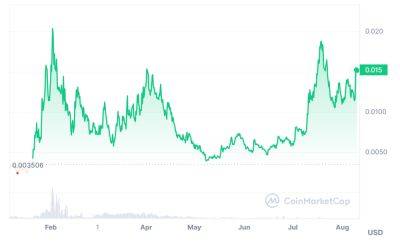Ether death cross threatens more downside as ETH price trades at a key support level
Ether’s price fell this week, and several data points are beginning to suggest that further downside could be in store.
On July 24, Ether (ETH) experienced a drop close to its monthly low, reaching $1,825 amid Bitcoin’s (BTC) negative price action, as uncertainty loomed over macroeconomic conditions and a potential whale sell-off.
Several on-chain and technical indicators point to further downside in ETH prices. However, the extent of this downward movement could be limited, considering the profit levels of existing holders and the decrease in ETH’s liquid supply.
Since the beginning of 2023, Ethereum’s network value-to-transaction value (NVT) metric has indicated that the asset may have been overpriced.
Glassnode’s NVT signal gauges the relative value of the Ethereum network by comparing the market price to the volume of on-chain transactions. A higher NVT reading implies that ETH could be trading at a premium.
The NVT chart from Glassnode reveals that the metric typically fluctuates between 30 and 80. However, at the start of 2023, it surged to three-year highs of 120 and has maintained higher levels since then. This suggests that either a pullback in price or an increase in Ethereum’s on-chain activity would be necessary to trigger a reset in this metric.
Nevertheless, the profit levels of short- and long-term holders suggest that the downturn could be restricted.
Ether’s negative price action usually reverses when the net unrealized profit/loss (NUPL) metric of short-term holders is negative, meaning short-term holders are in losses. It causes some weak hands to panic sell, allowing buyers to scoop up coins at a cheaper price.
Currently, the short-term NUPL ratio is close to neutral levels. However, there’s room for some
Read more on cointelegraph.com






















